In late 2022 and early 2023, The Interline and Printful surveyed the market to measure the scale, impact, and severity of overproduction in fashion.
The data we gathered paints a picture of a forecasting and manufacturing ecosystem that has fallen behind the speed of the industry, and makes a strong case for localized, digital, on-demand production as a way for fashion to both blunt its environmental impact, and achieve greater agility and predictability in an increasingly uncertain market.
How often fashion forecasting fails, and why
Speed, sustainability, and scale: the problems with analog production
Another dawn for digital printing
(Re)discover on-demand
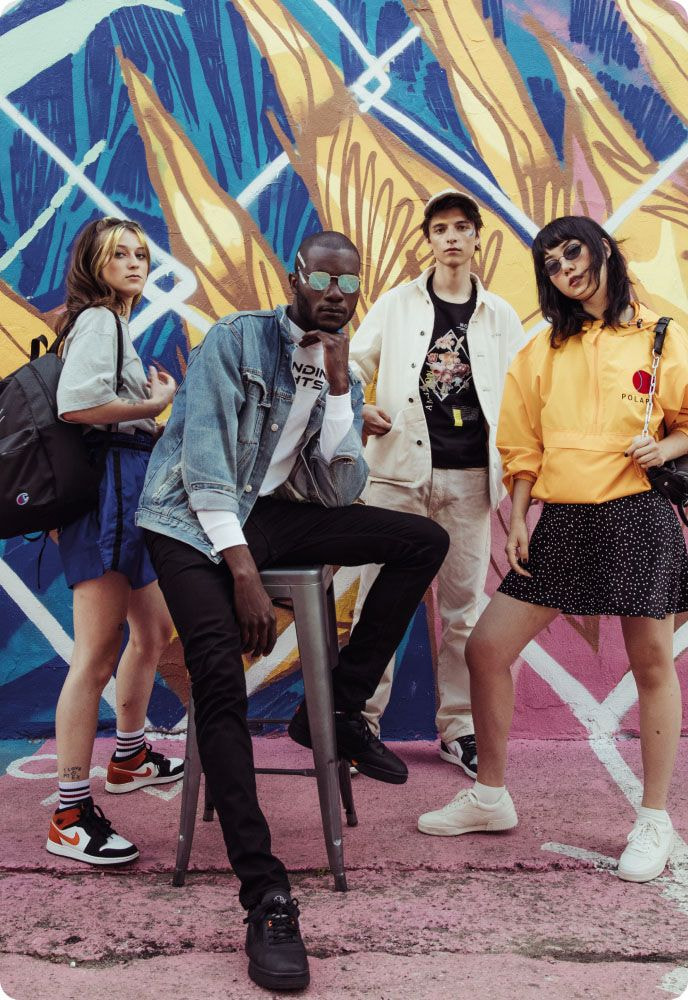
Like all product-driven industries, fashion makes what it believes buyers want. From broad categories to individual stock-keeping units, brands bring to market the styles that they expect to sell—in the volumes that they expect them to sell in.
In an ideal world, those predictions for variety and volume would be perfectly calibrated to real consumer demand, and every product would sell at full price. No garments left over; no customers left wanting something that’s out of stock.
The reality has always been different in fashion: steep markdowns have been commonplace for decades, the hottest products sell out and aren’t replenished quickly enough, and the industry has built a reputation for creating unnecessary waste.
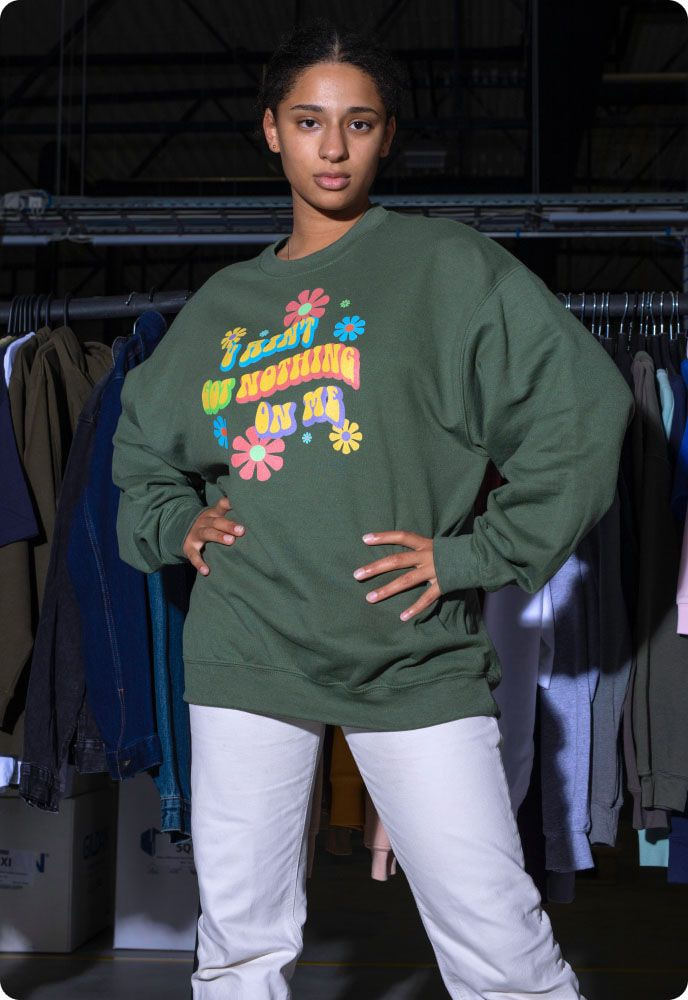
While this has been the case for a long time, last year these forces became particularly pronounced. At the end of 2022, in the wind-up to the holiday season, some of the largest brands and retailers in the world found themselves holding a historic amount of excess inventory. And at the start of the year, the world’s attention was drawn to a mountain of fashion waste that had been dumped in Chile’s Atacama desert when a fire ripped through the 60,000-ton horde.
It can be tempting to think of the root cause of these stories as being unique, transient, Covid-era supply shocks. But that would ignore both the deep history and the large scale of the problem.
For decades, fashion has operated under a model of forecasting, long production cycles, and the use of blunt tools like sticker price sales and disposal to offload anything left unsold at the end. The stories we saw last year didn’t originate from a new or temporary situation, but were, instead, a more obvious outcome of a longstanding approach.
And while this model has persisted, the industry’s pace has increased. Research suggests that fashion’s production volume has doubled since the turn of the millennium, meaning that the scale of the problem has been going upward for the last 22 years—and is continuing in that direction today.
This is a systemic matter. Fashion’s appetite for growth has been steadily accentuating the disconnect between the industry’s ability to forecast accurately, and the mechanics of slow, high-volume production that have become the industry standard. And the results are becoming more obvious over time.
Those results are also being recognized within the fashion industry itself. In late 2022 and early 2023, The Interline canvased a curated, international group of brands and retailers, who were invited to share their perspectives (anonymously) on how the nature of forecasting and production had impacted their business last year.
Of the companies whose data we captured, only around a quarter believed that they had generally been successful in their ability to forecast and meet demand in 2022. This means that roughly three quarters had not seen the same success—and in 2022 those companies had either made products that weren’t as well-suited to the market as they could have been, or they had released products that were on-point, but they had ordered either too many or too few of them.

Other industries, of course, face similar challenges. But the scale is, we believe, unique to fashion. It’s difficult to imagine the consumer electronics industry, for example, misinterpreting or missing demand across the majority of its brands.
The same comparison also holds when we consider the universality of overproduction in fashion compared to other industries. According to the data we collected in late 2022, more than 60% of brands agree that overproduction had represented either a “huge” or “significant” problem for their business in the preceding twelve months. And only 17% reported that overproduction was happening, but that they didn’t consider it to be having a negative material impact on their operations.

But because these are such widespread, systemic issues, we must realize that they are not the fault of any one brand. Instead, they are woven into the way the industry works—meaning that a solution will need to offer an alternative that’s fundamentally different from how fashion operates today.
This report will propose one possible solution, but first, we need to understand where fashion’s current infrastructure is falling short.
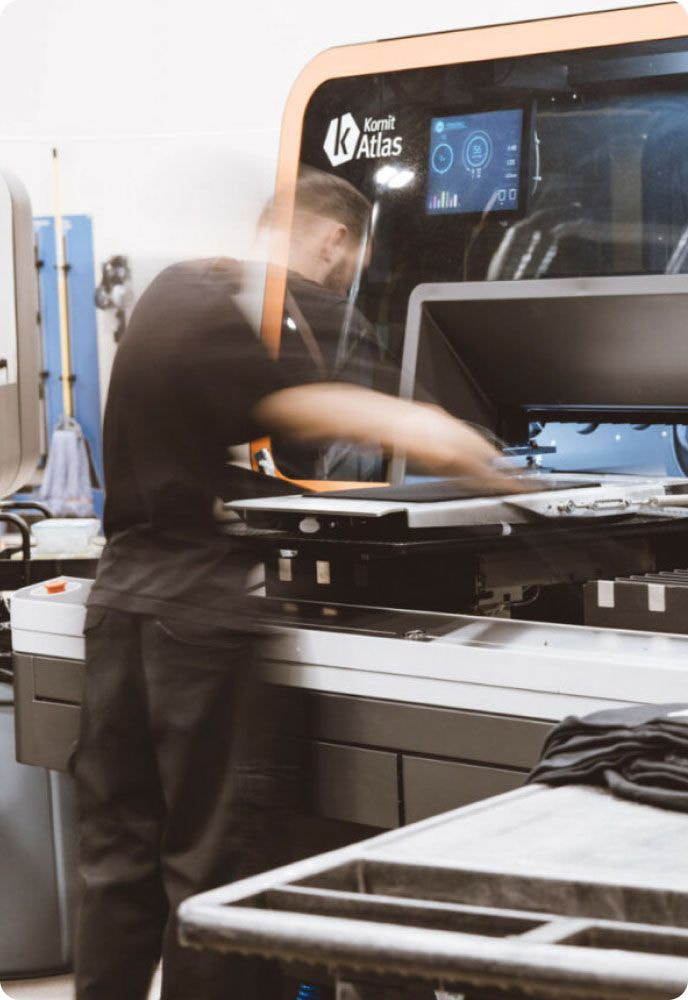
There is, as we’ve established, a strong argument for fashion brands to transform the way they forecast or sense demand to close the gap between estimation and genuine insight. And solutions exist for this problem—bringing mass data scraping and machine learning together to offer companies a way to obtain near or real-time market insights.
For the purposes of this report—and to unpick the problems at the heart of fashion’s current model of production—we will analyze what happens after those insights are obtained.
Today, even when demand is measured or predicted accurately, the value of those forecasts erodes over time. Trends change quickly, and significant drift occurs the longer a style spends in development and production. A garment that would have succeeded one month can easily flop a few months later.

But fashion’s sourcing and manufacturing timelines are very often measured in months. By the time a garment has gone through multiple rounds of sampling, the material has been sourced, full production run capacity has been booked, and quality assurance has taken place, the trend window identified could have passed.

Our data reveals that this scenario played out at least once for the majority of brands in 2022. Nearly 75% of the companies we surveyed stated that, in the last year, there had been one or more occasions where they’d been unable to get a new style to market quickly enough to capitalize on an opportunity because production timelines were simply too long.
And a similar issue also arises when brands predict the characteristics of a product accurately (it’s on-trend or innovative enough to carve out a new trend) but underestimate the volume they’ll need. When a product or a particular colorway resonates with its target market, there is often a business case to make more, but unless the brand has been particularly prescient and pre-booked more capacity, the time it takes to replenish that product is likely to be too long to capture the short tail of heightened interest.
Almost 80% of the brands and retailers who provided their perspectives for this report revealed that this had happened to them in 2022; at least one product had outperformed expectations, and they had been unable to bring it back in stock quickly enough.
It’s possible, of course, to increase the speed of traditional, analog production—but not without compromises that very few brands are willing to make. Corners can be cut on quality, and environmental and ethical standards can, technically, be relaxed. In practice, these will obviously produce their own undesirable outcomes: lower-quality products are more likely to be marked down or returned, and the level of scrutiny applied to sustainability and transparency metrics today, combined with brands’ own internal values, makes it extremely unlikely that anyone will wilfully turn a blind eye to pollution, waste, or exploitation in favor of speed.
This leaves us with a clear problem statement: even if fashion is able to forecast and gauge demand accurately, to overcome the cycle of overproduction the industry must find a way to shorten its route to market without sacrificing its standards.
And while that may sound like wishful thinking, the answer is simple. The relationship between forecasting and production should be flipped on its axis so that real, quantifiable demand becomes a trigger for sustainable, localized production—only making what’s needed, doing it digitally, and creating as close to the consumer as possible.
But if the vision is clear, the reality is more complex. Fashion is not producing this way—at least not industry-wide—today. Is this because the tools to make on-demand, digitally, don’t exist? Or is it because the industry has yet to universally embrace them?
Increase speed to market without compromises
Get expert insight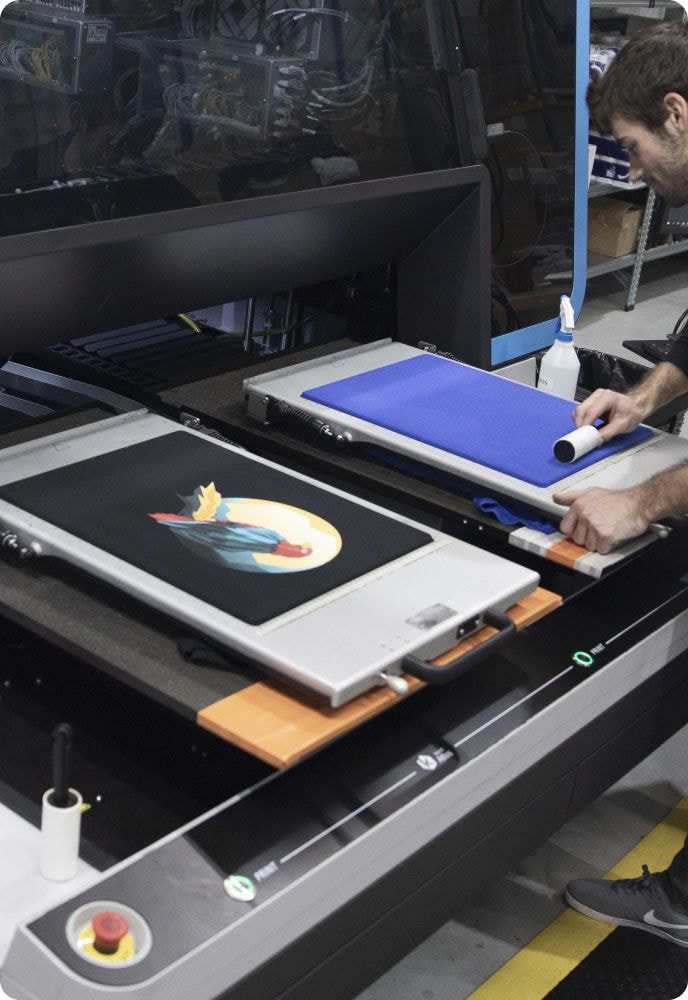
In the last few years, fashion manufacturing has made significant strides toward digitization in some areas. From connected fabric cutting and intelligent material yield optimization to the traceability of garments and even fibers, producing is increasingly coming online.
Alongside these innovations, digital printing (both direct-to-fabric and direct-to-garment) has also reached a new high watermark for maturity. And it makes for a fascinating comparison to traditional production since screen-printing—the de facto standard for printing artwork onto finished garments—exhibits all the problems our research identified. Screen printing is slow, inexact (it’s an analog process that creates an approximation of a digital source), resource-intensive, and primarily made viable through mass orders and economies of scale.
Digital printing, by contrast, has low minimum order quantities, is fully digital (it’s a digital print of a digital-native file), can be tapped into on-demand with little or no lead time, and can be located in or near consumption markets since it is less reliant on low-cost labor.
There is, in effect, a very clear benefit to replacing analog garment printing with digital. It represents a logical, like-for-like swap.
And while digital printing is often thought of as being technology on the longer-term horizon for adoption, the data we gathered through this research revealed that half of all brands believe that digital printing is capable of both delivering benefits over traditional production, and of scaling to meet their demands. Far from being an edge case or a far-future possibility, fashion is beginning to embrace the idea that digital printing can replace traditional methods.

But putting digital printing at the heart of a fundamentally different production model—one that encompasses everything from personalization to dropship distribution—can also offer much more. From new creative possibilities to predictable pricing, large-scale digital printing could offer the kind of deep-seated change our data suggests is going to be necessary for fashion to tackle its production problems.
Our partner for this research, Printful, has already committed to building digital printing infrastructure on a massive scale—producing more than 50 million garments in less than a decade, digitally, sustainably, and, increasingly, locally. And through that global deployment, they’ve seen customers realize:
Digital printing adheres as closely as possible to the original design intent, with no room for interpretation and variability. In practice, this can remove the requirement for multiple rounds of sampling, and can dramatically increase speed to market.
Digital printing allows brands to respond much faster to new trend opportunities, and to replenish successful production runs at the same time as retaining the ability to either allocate or relocate manufacturing capacity at relatively short notice.
With digital printing offering reliable results, the costs of production can become much more predictable. And while the commodity cost of consumables and materials can vary, the price of printing a garment remains relatively static when compared to the shifting sands of global manufacturing overheads—and the ability to locate a digital printing facility close to a consumer base also removes the uncertainty of intercontinental shipping.
Digital printing allowd brands to not only optimize the production of existing collections but to also break into new categories and seize new opportunities without significant upfront expenses. At a time of high customer acquisition cost, with brands increasingly seeking to maximize the lifetime value of a single customer relationship, being able to introduce new product types—on-brand and on-time—can offer easy onramps to new revenue streams that do not need to undergo the traditional prototyping, sampling, and production cycle.
And this is in addition to the benefits the same digital production network can offer to non-brand creators, influencers, and community owners, who can make use of digital, on-demand to bring branded products to market quickly, without the requirement to enter into mass-manufacturing relationships or incur the environmental cost of traditional methods.
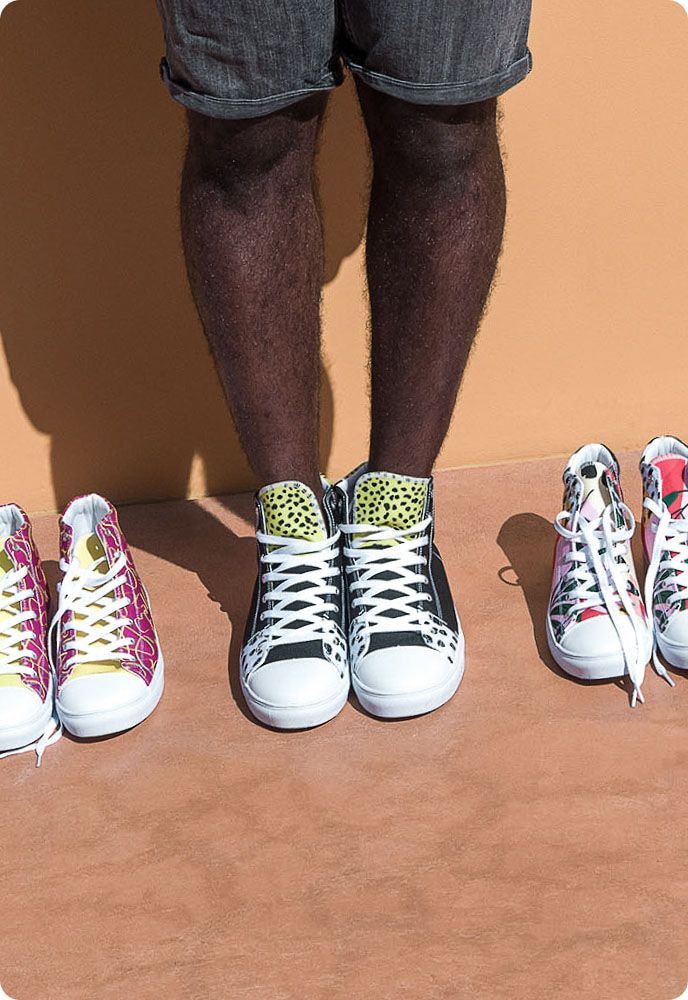
For all the complexities of multinational apparel production, this research has a straightforward finding: fashion is largely unable to make products fast enough. And this root cause lies behind most instances of over and under-production, as well as sitting at the heart of fashion’s environmental footprint.
As 2023 gets firmly underway, it’s clear that the pace of change is unlikely to slow down. Whether that change is taking place in the global economic and geopolitical landscape, or in the constantly-shifting landscape of consumer demand, unpredictability will remain a primary force this year and beyond.
This uncertainty will continue to have an impact on fashion’s ability to forecast—even with the use of new, smart, demand-sensing solutions—shifting the emphasis for improvement firmly onto production.
And against that backdrop, the availability of a viable, scalable, flexible, and reliable alternative could offer a timely solution to several industry challenges at once.
While there is no suggestion that fashion (or any other industry for that matter) will completely replace all of its high-volume offshore manufacturing with on-demand printing, there are several compelling reasons for the two to coexist.
For evergreen products and basics—which remain in stock year-round, and where over and under-production are less of a problem—production will likely continue offshore, with unit costs being optimized in other ways that do not require compromises to quality or sustainability.
For the growing share of fashion that needs to be produced quickly, as part of accurate, end-to-end digital workflows, and that benefit from being produced as closely as possible to the end consumer, a partner like Printful—who can offer speed measured in days rather than weeks, digital-native consistency, flexibility, and right-first-time quality—could be a key to reversing the trends identified in this report.
Today, in early 2023, the infrastructure to allow fashion brands to make products faster, cleaner, and closer exists. And if the industry takes advantage of it at the same time as making progressive improvements in other areas, there’s a good chance that fashion can start to outgrow overproduction.
Eliminate all inventory risks